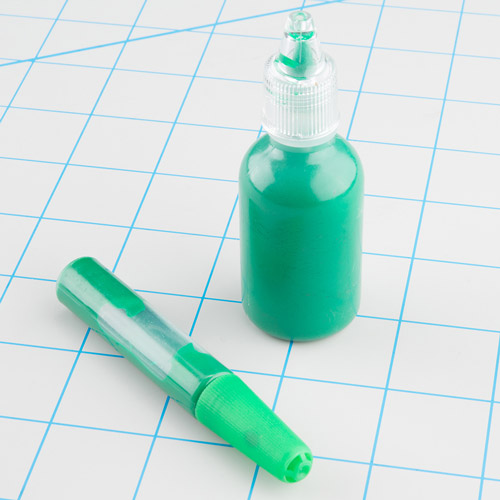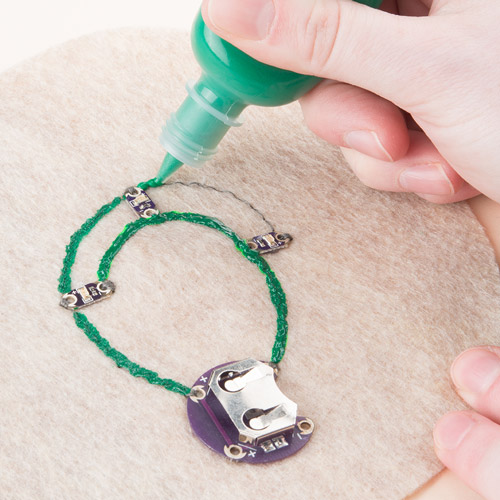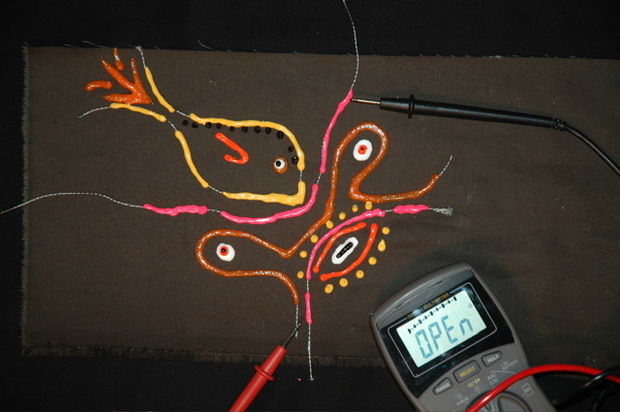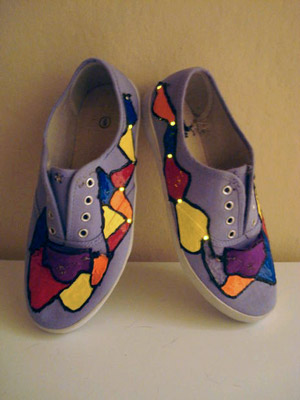Insulation Techniques for e-Textiles
Fabric Paint
Fabric paint is a quick way to add insulation and style to a project. Using different colored paints to hide and decorate stitches can create a really unique look for the front of your project. We recommend using 3D or 'Puff Paint' because its thickness makes covering traces a lot quicker and the tubes have a fine tip that makes applying much easier than a paintbrush.
Difficulty: Easy/Intermediate
Drying/Setting Time: Overnight
Mess Level: Moderate
Materials Needed:
- Fabric paint - 3D/Dimensional/Puff paint works great because it is commonly packaged in a squeeze tube or pen
- Scrap paper
- Paintbrush (optional) - to help spread the paint
- Masking tape (optional) - use as a stencil for clean edges
Common Dimensional Paint Brands: Tulip Dimensional Paint, Scribbles Dimensional Fabric Paint, Puffy Paint. Look for these in the apparel crafting or paint section of your local craft store.
Instructions:
Have some scrap paper ready and do a few practice lines to get a feel for the flow of the paint. Make sure to shake the paint in case there was any separation of the pigment. When you are ready, carefully paint over the conductive thread, making sure to use a thin layer. You can always add a second layer if needed - avoid large clumps of paint as these tend to smear easy and take a long time to dry.
When your painting is complete, let sit overnight to dry.
Pros:
- Decorative seal over thread
- Lots of colors
Cons:
- Takes practice to make even lines over thread
- Long dry time - especially with thick paint
- Squeeze tubes have a tendency to squirt out in large clumps - always have scrap paper handy when you first start using a tube
Examples:
Lynne Bruning wrote a quick tutorial on this technique that shows an interesting design with paint.
This LED Shoes Tutorial by Instructables member Carleyy makes great use of paint to hide the stitches and create a cool design.



